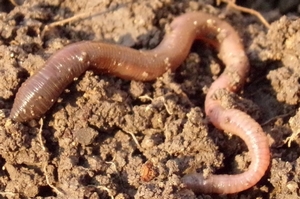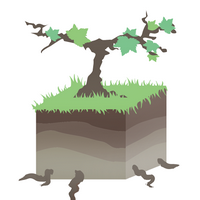ID of the project
8 partners from 6 countries involved: Italy (coordinator : Edoardo Costantini), France, Spain, Turkey, Slovenia, Sweden
Start of the project: 1st March 2015
Duration: 3 years
Main objectives of the project
The ReSolVe project aims at testing the effects of selected agronomic strategies for restoring optimal soil functionality in degraded areas within organic vineyard.
The term "degraded areas within vineyard" means areas having been reduced vine growth, disease resistance, grape yield and quality.
These areas can have lost their soil functionality because of either an improper land preparation, or an excessive loss of soil organic matter and nutrients,
erosion and/or compaction, element accumulation. The project will individuate the main causes of the soil functionality loss and test different organic recovering methods,
such as adding compost, adoption of green manure with different species, and dry mulching.
Actions to be implemented
The effects of these techniques will be tested through the monitoring of soil organic matter content and turnover, soil nitrogen and water availability, soil and root-zone microbial and microfauna biodiversity,
soil enzymes, plant water stress, plant phenology, and grape yield and quality. The techniques will also be tested for the capability to reduce the copper bio-availability.
Work Package 1: Project management and coordination

Objectives of WP1:
- Selection and standardization of the soil restoring techniques evaluated in the project, providing brief guidelines
- Coordination and control of the progress of the project tasks and deliverables
- Organization of the project meetings, production of mid-term and final reports
Work Package 2: Grapevine monitoring

Objectives of WP2:
Assessment of plant growth, water status, grape yield and composition in the different soil restoration strategies.
The monitoring of physiological status, crop yield and grape quality is performed using non-invasive sensing technologies such as RGB image analysis, IR-thermography and chlorophyll-based fluorescence. At harvest, the grape yield components
(bunch weight, number of bunch per plant, berry weight), and the grape composition (sugar content, acidity, polyphenols, and anthocyanins) are analysed on the different treatments. The available meteorological data of each experimental areas are also collected.
Grapevine water stress is measured directly on the vineyard by stem water potential during veraison and carbon isotopes analysis (Δ13C) on micro wine-makings obtained from the different treatments.
Work Package 3: Soil chemical, physical, hydrological properties and functionality

Objectives of WP3:
- Characterization of soil features and soil spatial variability in the experimental plots
- Monitoring of soil moisture, organic carbon, nitrogen and bio-available Cu in the different treatments
- Testing quick and low cost method for compost analysis
The differences of soil traits between degraded areas and non-degraded areas are investigated using profile descriptions. The soil profiles will be dug, described and sampled before and after application of restoring techniques, in order to carry out soil standard laboratory analysis and hydrological properties measurements. Root samples are also collected for WP5.
Each year, soil moisture, organic carbon and nitrogen are monitored during the main vine phenological phases, and cupper soil content is analysed.
Innovative methods to analyse C/N ratio, pH, salinity, and eventually other parameters of the compost will be tested.
Work Package 4: Soil Ecosystem services provisioning and providers

Objectives of WP4:
Different soil services will be modified by soil restoration strategies in the experimental plots. These modifications are mainly linked to changes in quantity and quality of organic matter. Therefore, WP4 will mainly focus on soil organic matter turnover, nutrient recycling and enzymatic activity. Moreover, WP4 will identify a selected set of providers as indicators of good soil functionality and biodiversity.
Soil ecosystem provisioning is monitored through soil respiration and soil enzymatic activity.
Soil ecosystem providers is monitored through a selected set of taxa as indicators for overall soil biota diversity belonging to macro-fauna (earthworms), meso-fauna (arthropods and collembolans), and micro-organism (nematodes, taxonomic and functional diversity of soil microbial community by DNA fingerprinting).
Work Package 5: Grapevine rhizosphere ecology

Objectives of WP5:
- Identifying microbial service providers (bacteria and fungi) in the grapevine rhizosphere in degraded areas and in different soil restoration strategies, where significant changes in plant performances can be detected.
- Setting up a culture collection of microbes that may have the potential to promote grapevine growth or to control root pathogens.
Microbes from the rhizosphere and root endophytes of experimental grapevines are inventoried from root samples collected during soil profile description (WP3). The activities may identify prominent disease causing organisms, specifically fungi, using methods based on molecular barcodes.
Selected microbes will be tested for their beneficial effect on grapevine growth and for their biological control potential against black foot disease in greenhouse.
Field tests will evaluate the effect of two already developed biopesticides (Prestop® and Mycostop®) and will involve the collaboration with growers in Sweden and the biopesticide producing company.
Work Package 6: Best practises transfer, dissemination, stakeholders training

Objectives of WP6:
- Promoting the project and soil functionality in viticulture
- Formalization and transfer of soil restoring techniques from the project to stakeholders
Various communication media will be used to inform the scientific community, stakeholders and general public about the content and results of the project.
Leaflets, a website, scientific publications, articles, congress presentations and guidelines will be produced to promote the project and synthesize the major outcomes. Training workshops and technical events will be organized for stakeholders by each participating country.

